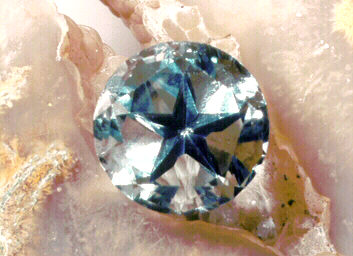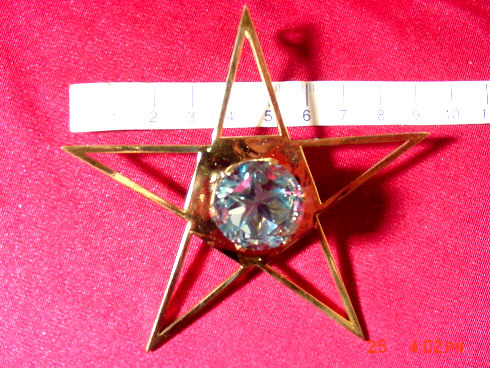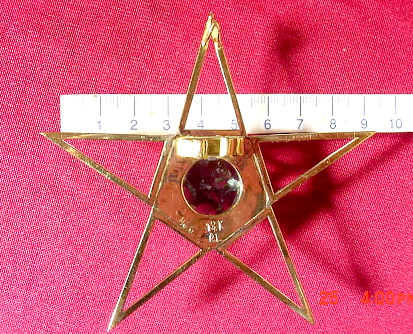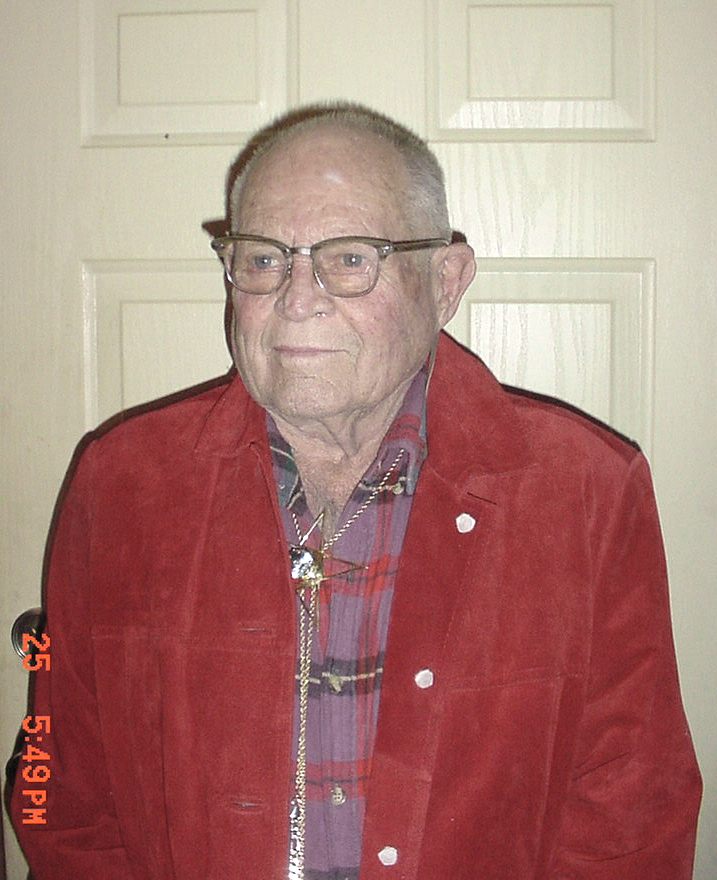THE WOODWARD TOPAZ

Fig.1 The WOODWARD Texas-cut TOPAZ before mounting. This faceted stone weighs 50.9 k.

Fig.2 The WOODWARD Texas-cut TOPAZ after mounting. (10 centimeters = 3.94 inches).
This is the largest and deepest blue Texas topaz with the "Lone Star" cut. Looking deep within the gem can be seen the same five-pointed star as shown in Fig. 1. It was named 'THE WOODWARD TOPAZ' by the cutter.

Fig.3 The reverse side of the mounting.
This beautiful topaz was found by Bill Odom of Austin, Texas while topaz hunting in central Texas with his wife Ione and me in 1951. This gemstone, along with almost 15 pounds of other smaller topaz, was dug from a debris-filled joint crack crossing the Katemcy Creek on the Secrist ranch in Mason County. I was later able to acquire the uncut topaz from Bill. A friend in the Ft. Worth/ Dallas area, whom I cannot recall at this time, deserves credit for a very good example of the cutting, faceting and polishing of the finished "Lone Star" gem.

Fig.4 J. Frank Woodward II wearing the Woodward Ranch Topaz as a bolo tie.
The 46.6 gram 18 Karat gold mounting was designed by me and subsequently completed by Rick Laspada of the TLC Jewelers of El Paso, Texas in April 2003. It was designed to be worn either as a necklace or on a bolo tie.
TOPAZ 101: for those interested in more details. Topaz has an orthorhombic crystal system, a hardness of 8, and comes in many colors: pale blue, sky blue, greenish, white, yellow, straw yellow, grayist, pink, reddish, and orange. It has a refractive index of about 1.60 - 1.63 and a specific gravity of 3.49 - 3.57. One of the biggest problems found when cutting a topaz is its perfect cleavage: one direction, basal, highly perfect.
Texas topaz, found mostly in and near Mason County, compares favorably in color, size, and clarity with other topaz found anywhere in the United States. Since topaz is heavier than quartz it is commonly found in the bottom of the stream bed and immediately on top of the granite bedrock. [Texas Gemstones, by E.A. King, Jr., February 1961, Bureau of Economic Geology, The University of Texas.]
J. Frank Woodward II (4/2003)
(Deceased July 2008)
Return to the HISTORICAL INTERESTS page
All rights reserved.
